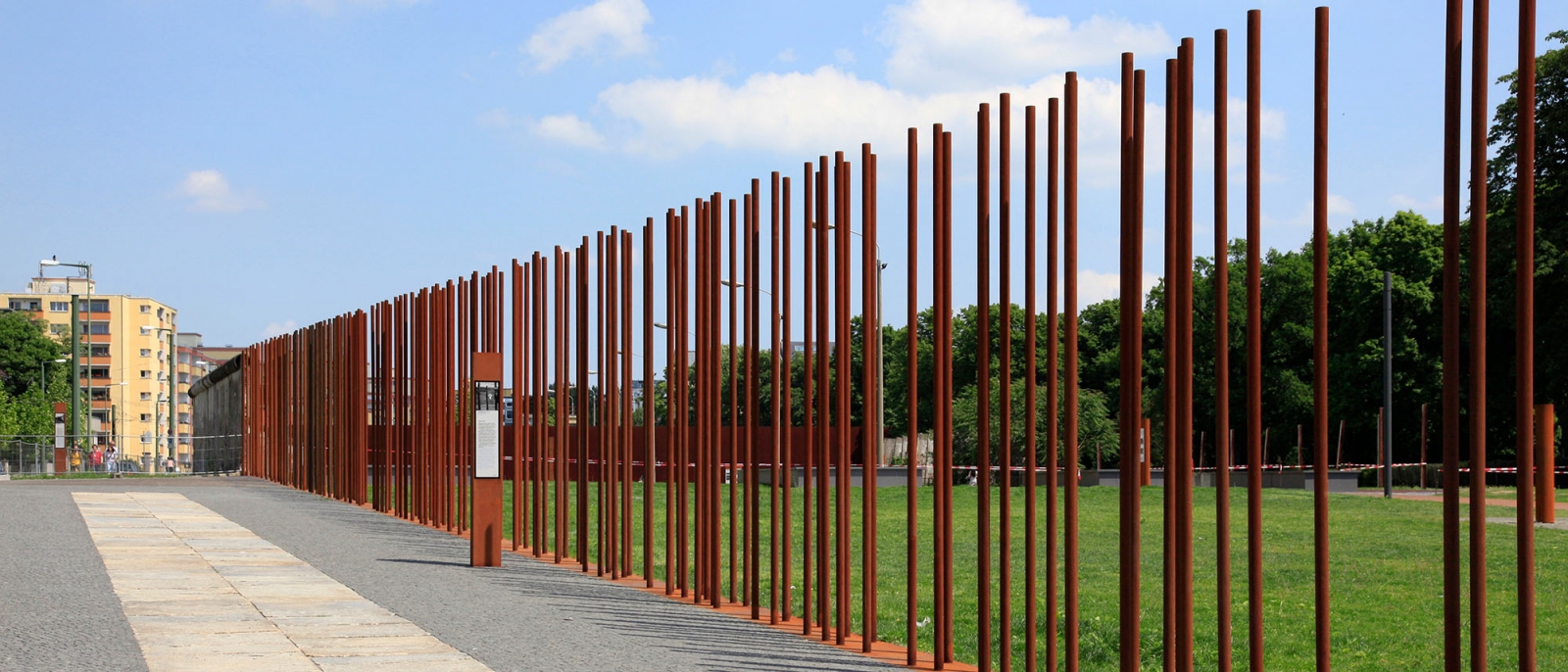
Photo: Jürgen Hohmuth
Outdoor Exhibition
The permanent outdoor exhibition in the former border strip is located at the historical site and uses it to explain the purpose and function of the Berlin Wall. It describes the area and the important events that took place here, placing them in historical context. It tells the stories of people whose lives were restricted by the Wall, who had to move because of it, and who aspired to get beyond it.
Numerous relics and traces of the border fortifications are found on the grounds. Corten steel marks places where elements no longer exist, making them visible again. This material is also used to visualize the torn-down border houses, the demolished Reconciliation Church and escape tunnels. Archaeological windows show older layers of the border fortifications and parts of the city that were lost when the Wall and border strip were built. Incident markers in the ground draw attention to places where a specific event took place. These incidents are described in more detail in flyers (available at the Visitor Center and Documentation Center) and in the mobile tour guide.
The Wall and the Death Strip
This area focuses on how the SED dictatorship used the Berlin Wall as a central instrument to secure its power. It shows the brutality of the border regime, how it functioned and how it impacted the city and the people in the East and West.
As part of the exhibition design, Bergstrasse, a street which was largely preserved beneath the border strip, was excavated and continues to be divided by the Wall today.
This section also contains the “Window of Remembrance,” presenting the names, dates and photos of the victims of the Berlin Wall. It serves as a place for individual commemoration.
The Destruction of the City
This area focuses on how life on Bernauer Strasse was affected by the Berlin Wall. It describes the residents of the border houses, how they lived before the Wall was built and what they experienced afterwards. Some of them used their apartments to flee to the West; others were forced to move against their will. The buildings were demolished in the mid-1960s to make room for the border fortifications. Today, the outlines of the buildings are marked in the ground and identified by house number. The cellar rooms of the building at Bernauer Str. 10a have been excavated.
The history of the Reconciliation Church and the escape tunnels on Bernauer Strasse are also addressed in this section
Building the Wall
The exhibition in this area focuses on the ongoing construction and expansion of the border fortifications. It also addresses surveillance in the “front border territory” – the area situated directly before the Wall on the East Berlin side. The focus is on the surveillance of residents living in the border area, but also on the role played by the many people who participated in the border regime – as employees in the civil administration, as informers for the MfS, or as voluntary assistants to the People’s Police or border troops.
Everyday Life at the Wall
In the area of the exhibition along the former patrol path describes how the Wall affected the enclosed west side of the city and its residents. Topics here include the state visits and vigils that were often used to draw attention to the Wall around the city as well as the East-West propaganda clashes that occurred at the Wall. The daily routine of the border soldiers, Western Allies and West Berlin forces at the Wall is also described in this section.
Special exhibit stations shed light on specific events that occurred here, such as the escape tunnels and the opening of the Wall on Bernauer Strasse.